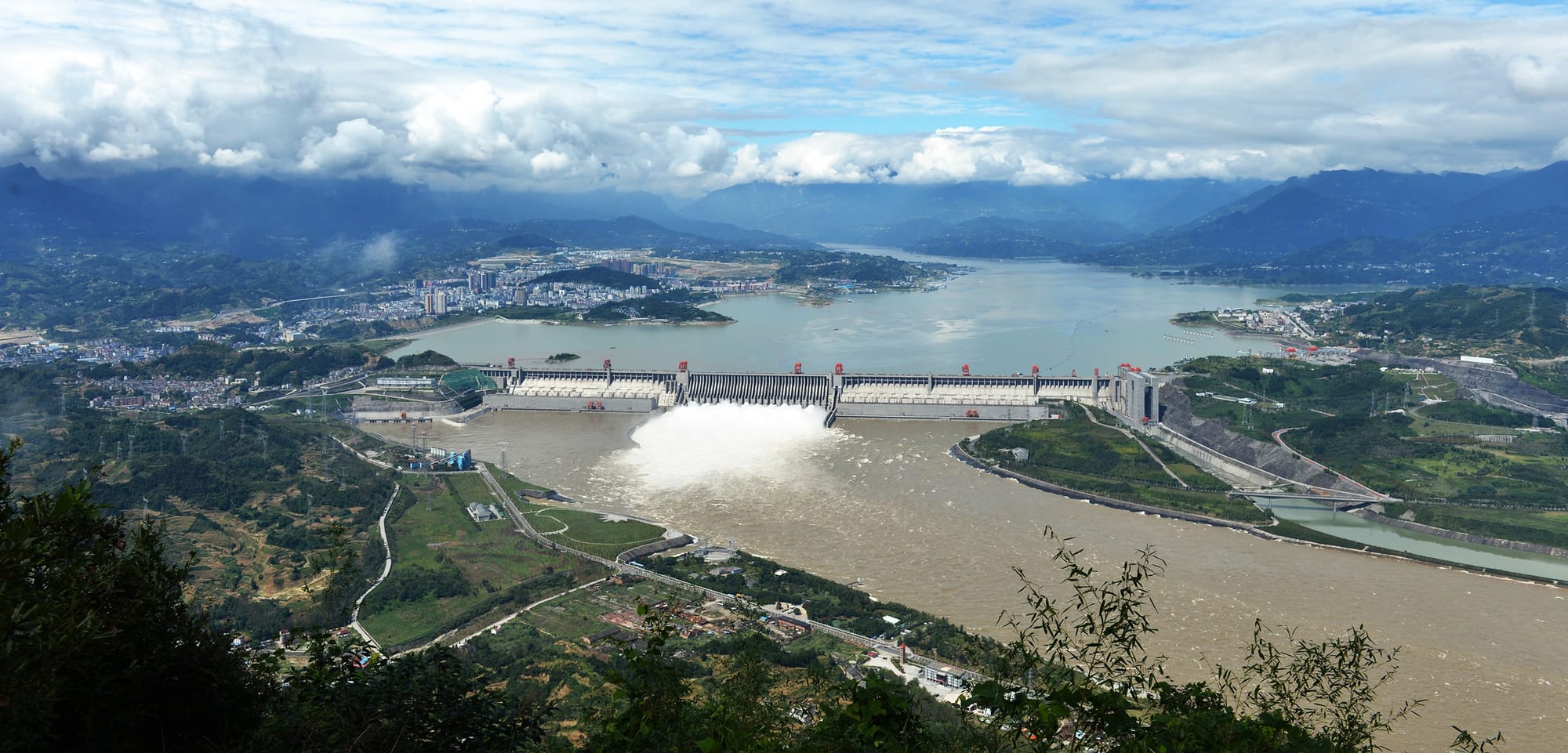China: The thirsty drowning dragon

Photo from Three Gorges Dam in China by Isabel Kendzior, via Shutterstock
The Hague, 15 June 2021* Print Version [PDF]
By Wouter Veening, President, IES
In all articles these days about China’s position in the world, one subject has remained underexposed: the country’s great ecological vulnerability.
With 20% of the world’s population and 10% of the global agricultural area and only 7% of the world’s freshwater reserves, China, in addition to increasing its own production, is forced to import food in a major way, certainly food that requires water in production, such as grains and meat. In Northern China water availability is extremely low; the Yellow River suffers from severe water scarcity and there were farfetched plans to divert water from the Tsjing Po, the in Tibet located upper reaches of the Brahmaputra River, essential for the downstream countries India and Bangladesh, to the Yellow River.
Groundwater in China is also largely irreversibly polluted and the farmland erosion due to climate-related droughts is increasing seriously. During the past months, large parts of mainly Western and South-Western China has been ravaged by flooding as a result of persistent downpours also related to global warming atmosphere. Here the Chinese dragon, the largest greenhouse gas exhaler in the world (see International Energy Agency reports) bites in its own tail!
Very ominous are the floods upstream of the Three Gorges Dam, the largest hydroelectric dam in the world, in the Yangtze River. Concerns are increasing that the level of the reservoir behind the dam gets so high that it runs over the dam, because the flushing capacity is insufficient. There are speculations that the dam could even break and there is another speculation that the Chinese authorities, knowing that the dam in the end cannot hold, would take this up themselves in a period when the reservoir is not too full. (Watch an animation that shows how water would make its way at starting at 100 km per hour through the bed of the Yangtze along Wuhan to Shanghai on the coast).
There is an iron logic that the Chinese rulers may have an interest to dismantle the dam as early as possible, because, as the dam is getting older and the construction defects will become more pronounced, plus the fact that the pressure on the dam as a result of the on-going climate crisis will intensify, the risk of an un-controlled collapse is increasing day-by-day. If this happens it will have hardly foreseeable consequences for the population, agriculture and industry, the environment and nature, and an insurmountable loss of face for the regime. It is better for them to have the process in own hands, also because a break cannot be attributed to a foreign interference.
Can a controlled dismantling, however, be organised? The Yangtze, which also rises in Tibet, is the longest river in China with the economic metropolis Shanghai at its mouth and the catchment area is home to more than a third of the Chinese population, over 400 million people. According to a calculation published in Fortune 2019, the basin as such would be the third largest economy in the world in terms of GDP. For the vital exports from China, this area must therefore also remain intact in terms of the environment and hydrologically, but the question is whether at this stage of ecological disruption that is still possible. When considering the position and positioning of China in the world its environmental vulnerability must be taken into account.
Probably China’s aggressive stance in the South China Sea towards Hong Kong and Taiwan, on the border with India, towards Japan across the Senkaku Islands, is to a large extent prompted to turn the attention off the ecological drama unfolding at home.
* This article was first published in European Business Review, 5 October 2020.